GUAC in Washington, D.C.
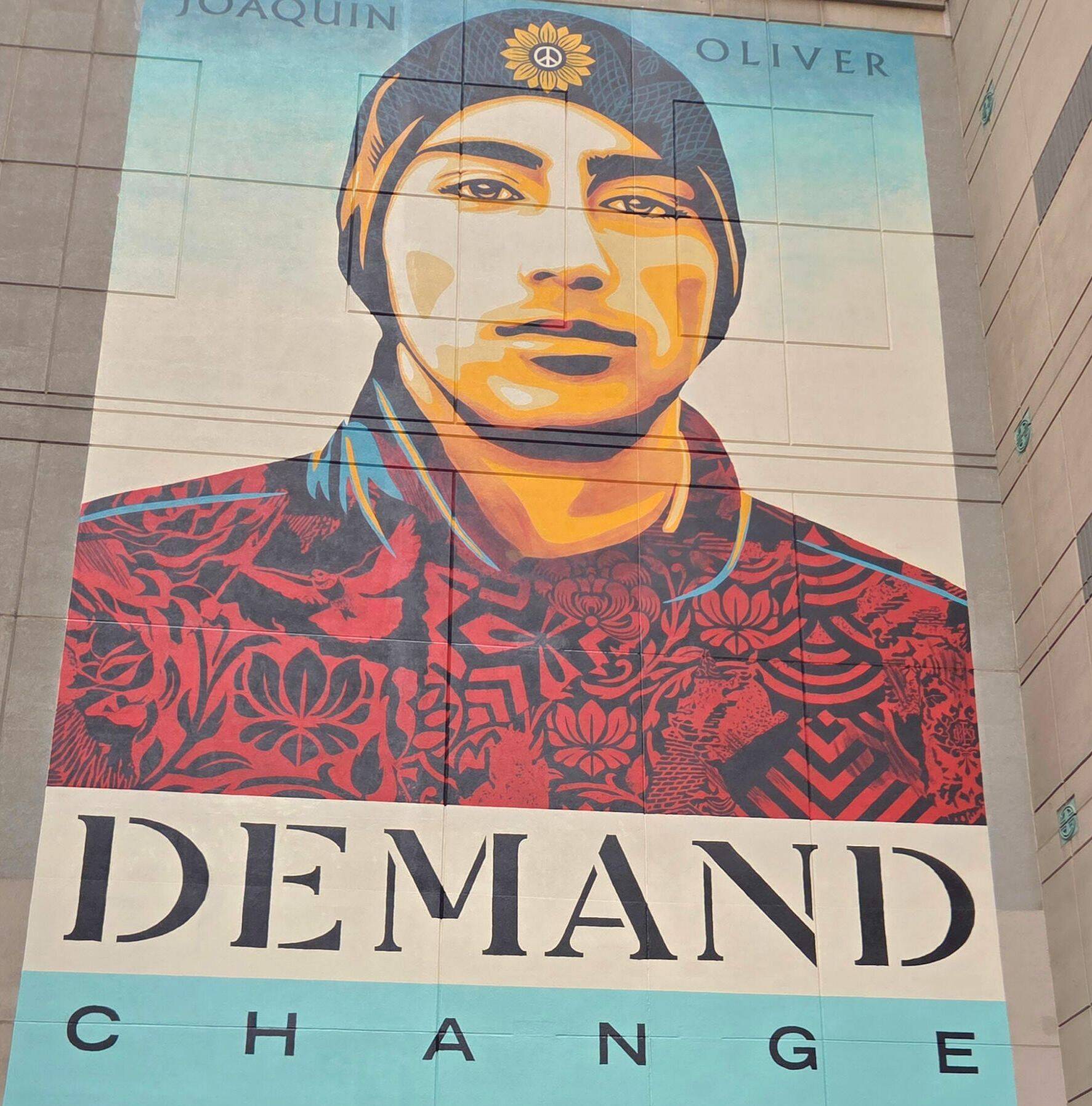
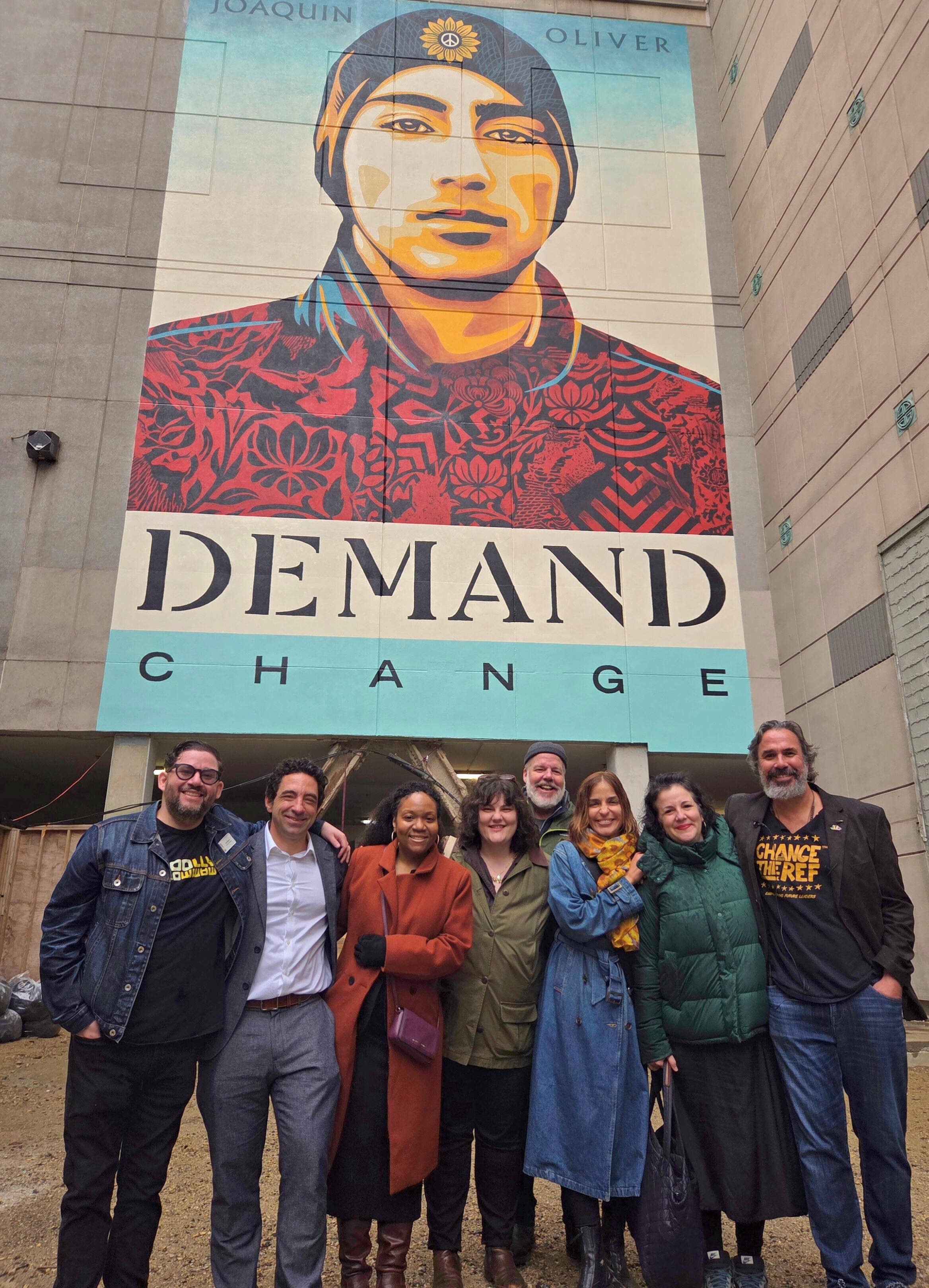
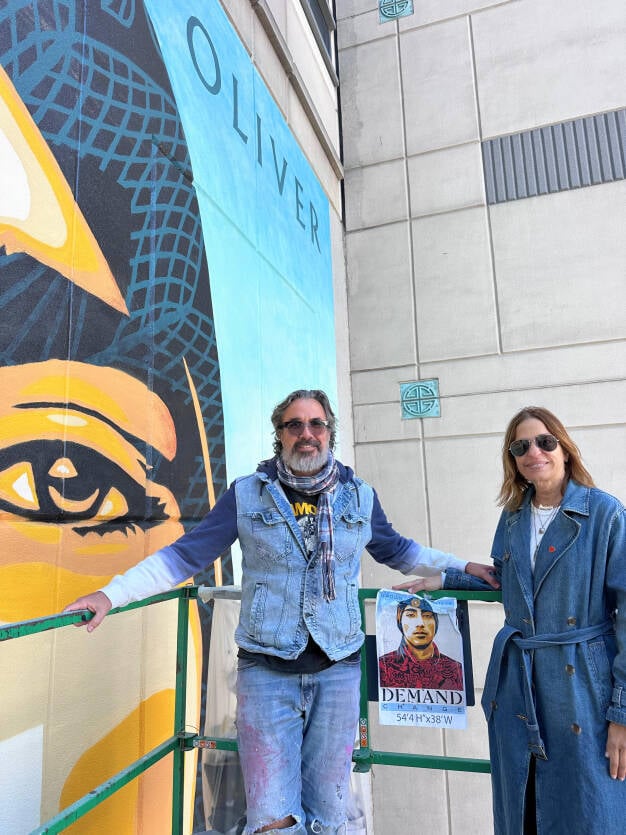
“This mural is not just a tribute to Joaquin, but a reminder that there is a huge human consequence to gun violence and there aren’t enough walls to pay tribute to all who have died tragically.”
Photo Credit: Change the Ref
641 D St NW, Washington, DC 20004
THANK YOU WOOLLY MAMMOTH THEATRE
Some knew Joaquin’s name. Others were learning it for the first time. Young people stopped to take photos, sharing the mural across social media and connecting it to their own concerns about safety and justice. In this way, GUAC became more than paint on a wall. It became a catalyst for conversation and connection.
Joaquin’s story is devastatingly personal, but tragically universal. It reflects the scars of gun violence that run through communities across the country, and it presses its viewers to confront that truth directly.
In a city built on monuments and movement, GUAC stands as a different kind of reminder: one rooted in loss, but ripe with the possibility of change. Placing Joaquin’s presence in Washington, D.C. ensures his story cannot be ignored and keeps the demand for action visible, urgent, and deeply human.
Renowned artist Shepard Fairey, best known for his iconic “Hope” poster during President Obama’s campaign, was the creative force behind the design. Known internationally for his socially conscious work, Fairey has long collaborated with Change the Ref, using art as a platform for remembrance and protest.
For Fairey, this mural was about more than artistic expression. “I hope that anyone who sees this mural is intrigued by who Joaquin Oliver was/is and can understand that he had huge promise and meant the world to his parents. Manny, Patricia, and I don’t want other families to lose their kids to gun violence.”
The process of bringing the mural to life became a moment of public engagement. Fairey worked closely with the Olivers, Woolly Mammoth Theatre Company, and the DowntownDC BID to finalize the design, which honored Joaquin while amplifying Change the Ref’s “Demand Change” message. Over several days of painting, community members gathered to watch, ask questions, and share their own stories.
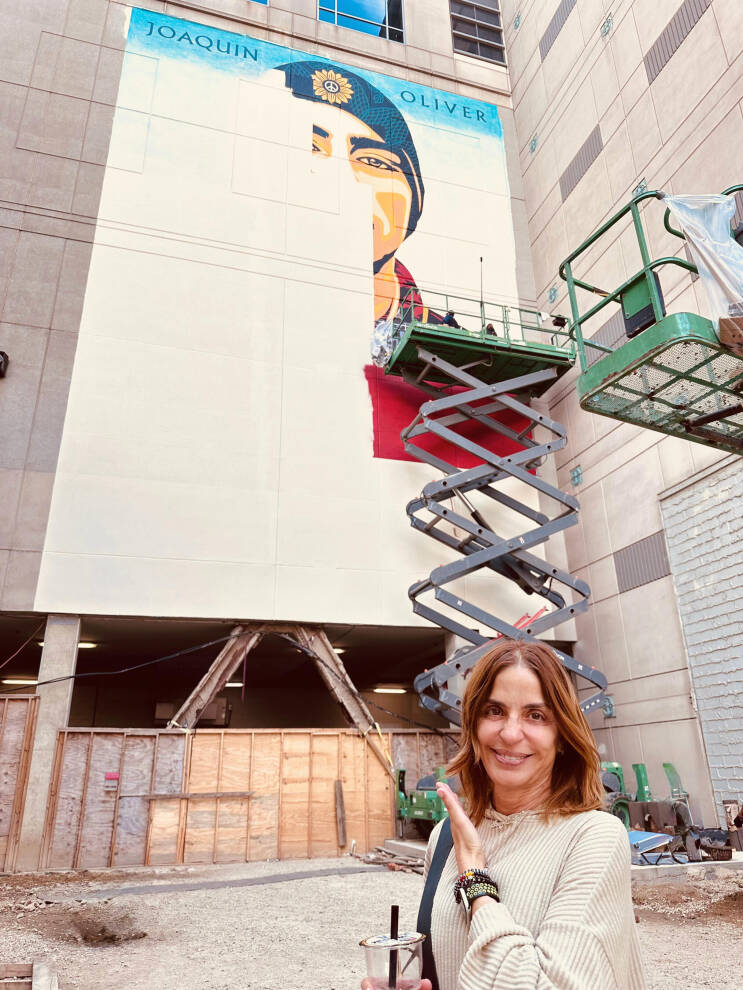
Gun violence is a frightening reality in the United States. Behind every statistic is a family, and a community, forever changed.
Manuel and Patricia Oliver know this reality all too well. Their son, Joaquin “Guac” Oliver, was just 17 years old when he was killed in the 2018 mass shooting at Marjory Stoneman Douglas High School in Parkland, Florida.
Since that unimaginable day, the Olivers have transformed their grief into action. They founded Change the Ref, an organization that uses art and activism to amplify Joaquin’s story and push for gun reform. Their mission: to demand change so other families don’t have to endure the same loss.
Earlier this year, Change the Ref partnered with the DowntownDC Business Improvement District to bring Joaquin’s story to the nation’s capital. The six-story mural, near the Capital One Arena, is impossible to miss. It’s bold, layered, and commands attention from everyone who passes by. It’s also strategically close to the U.S. Capitol, where critical policy decisions are made every year.
GUAC in Washington, D.C.
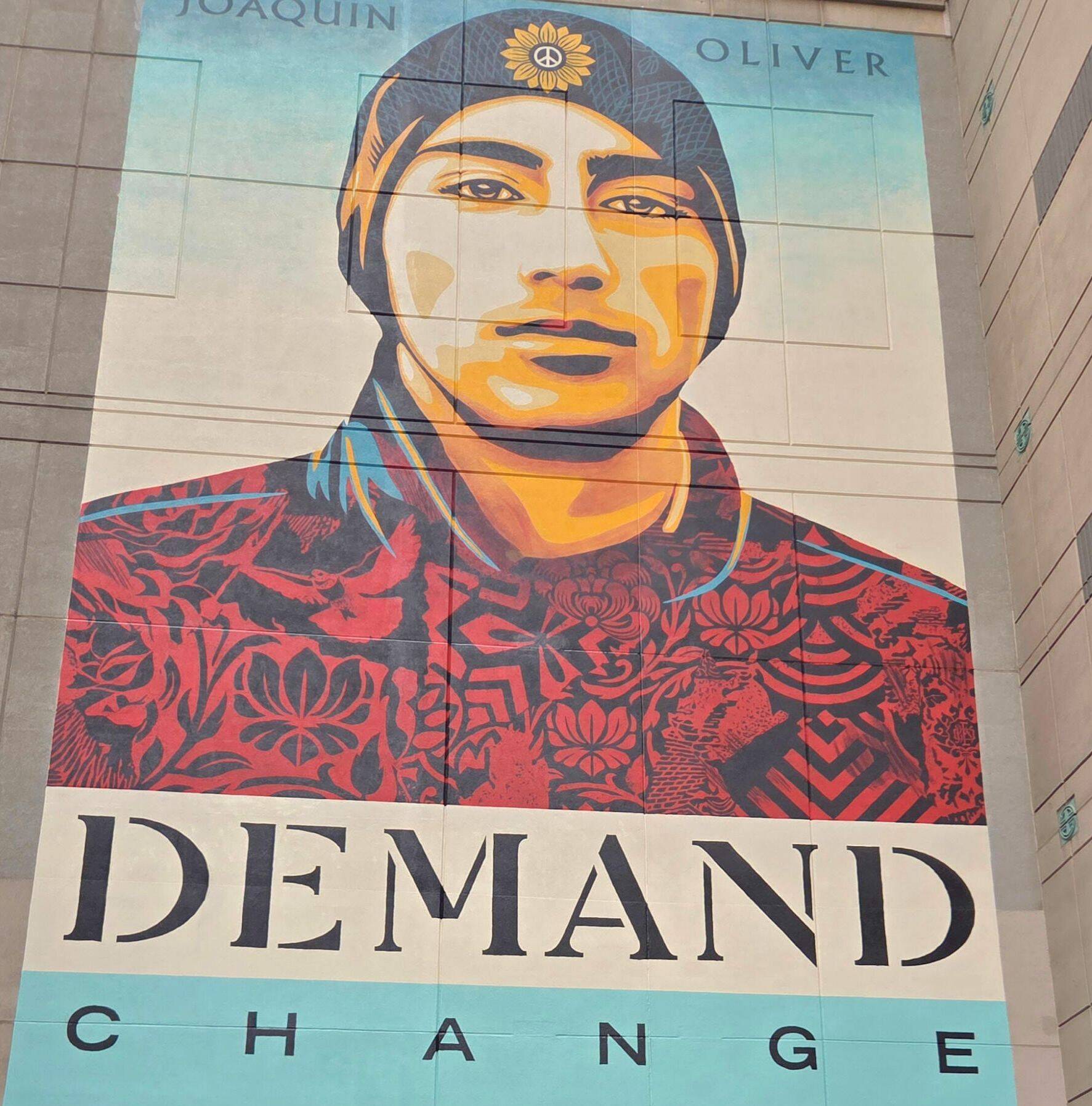

Photo Credit: Change the Ref
THANK YOU WOOLLY MAMMOTH THEATRE
641 D St NW, Washington, DC 20004

Some knew Joaquin’s name. Others were learning it for the first time. Young people stopped to take photos, sharing the mural across social media and connecting it to their own concerns about safety and justice. In this way, GUAC became more than paint on a wall. It became a catalyst for conversation and connection.
Joaquin’s story is devastatingly personal, but tragically universal. It reflects the scars of gun violence that run through communities across the country, and it presses its viewers to confront that truth directly.
In a city built on monuments and movement, GUAC stands as a different kind of reminder: one rooted in loss, but ripe with the possibility of change. Placing Joaquin’s presence in Washington, D.C. ensures his story cannot be ignored and keeps the demand for action visible, urgent, and deeply human.
“This mural is not just a tribute to Joaquin, but a reminder that there is a huge human consequence to gun violence and there aren’t enough walls to pay tribute to all who have died tragically.”
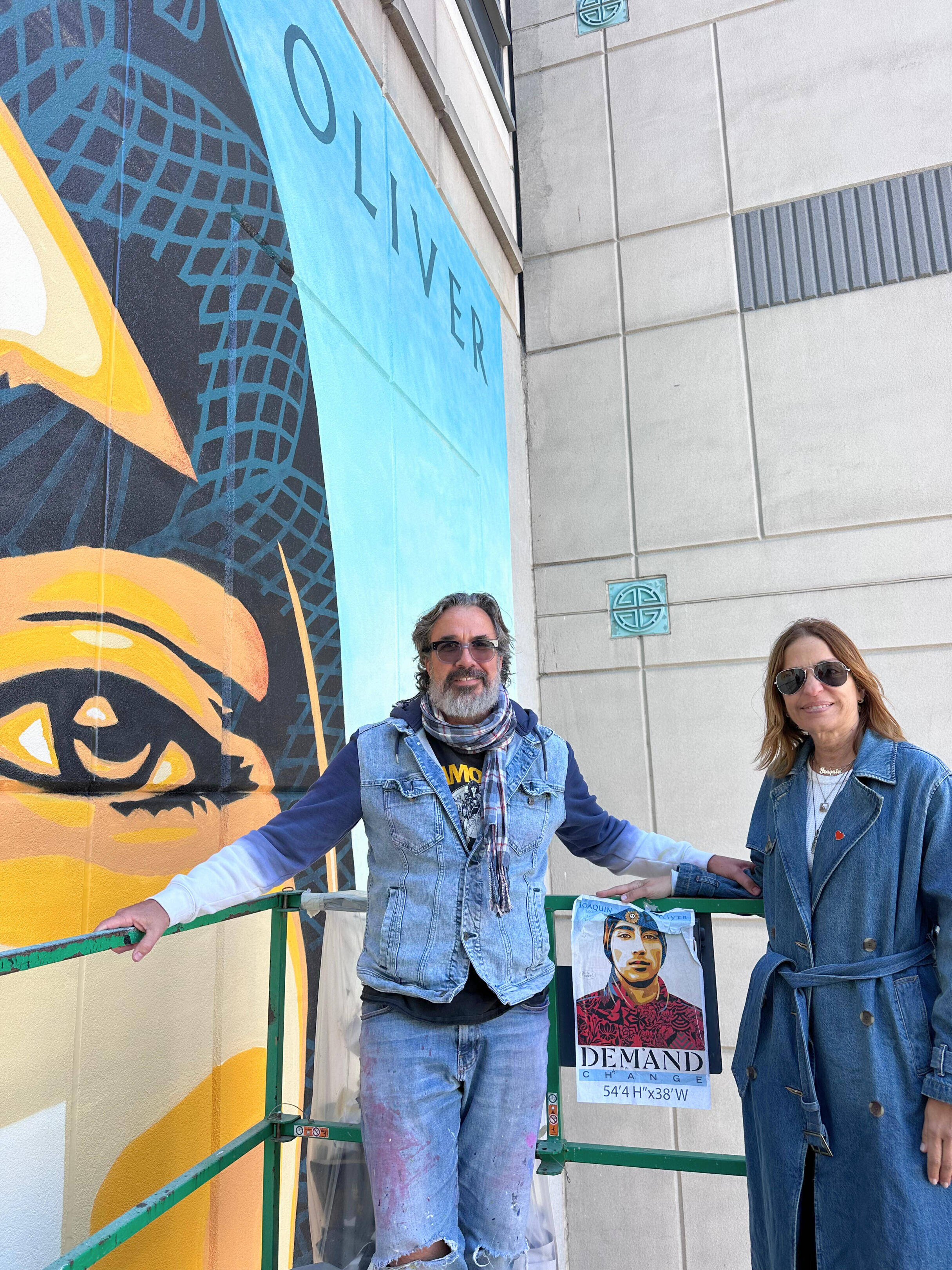
Renowned artist Shepard Fairey, best known for his iconic “Hope” poster during President Obama’s campaign, was the creative force behind the design. Known internationally for his socially conscious work, Fairey has long collaborated with Change the Ref, using art as a platform for remembrance and protest.
For Fairey, this mural was about more than artistic expression. “I hope that anyone who sees this mural is intrigued by who Joaquin Oliver was/is and can understand that he had huge promise and meant the world to his parents. Manny, Patricia, and I don’t want other families to lose their kids to gun violence.”
The process of bringing the mural to life became a moment of public engagement. Fairey worked closely with the Olivers, Woolly Mammoth Theatre Company, and the DowntownDC BID to finalize the design, which honored Joaquin while amplifying Change the Ref’s “Demand Change” message. Over several days of painting, community members gathered to watch, ask questions, and share their own stories.
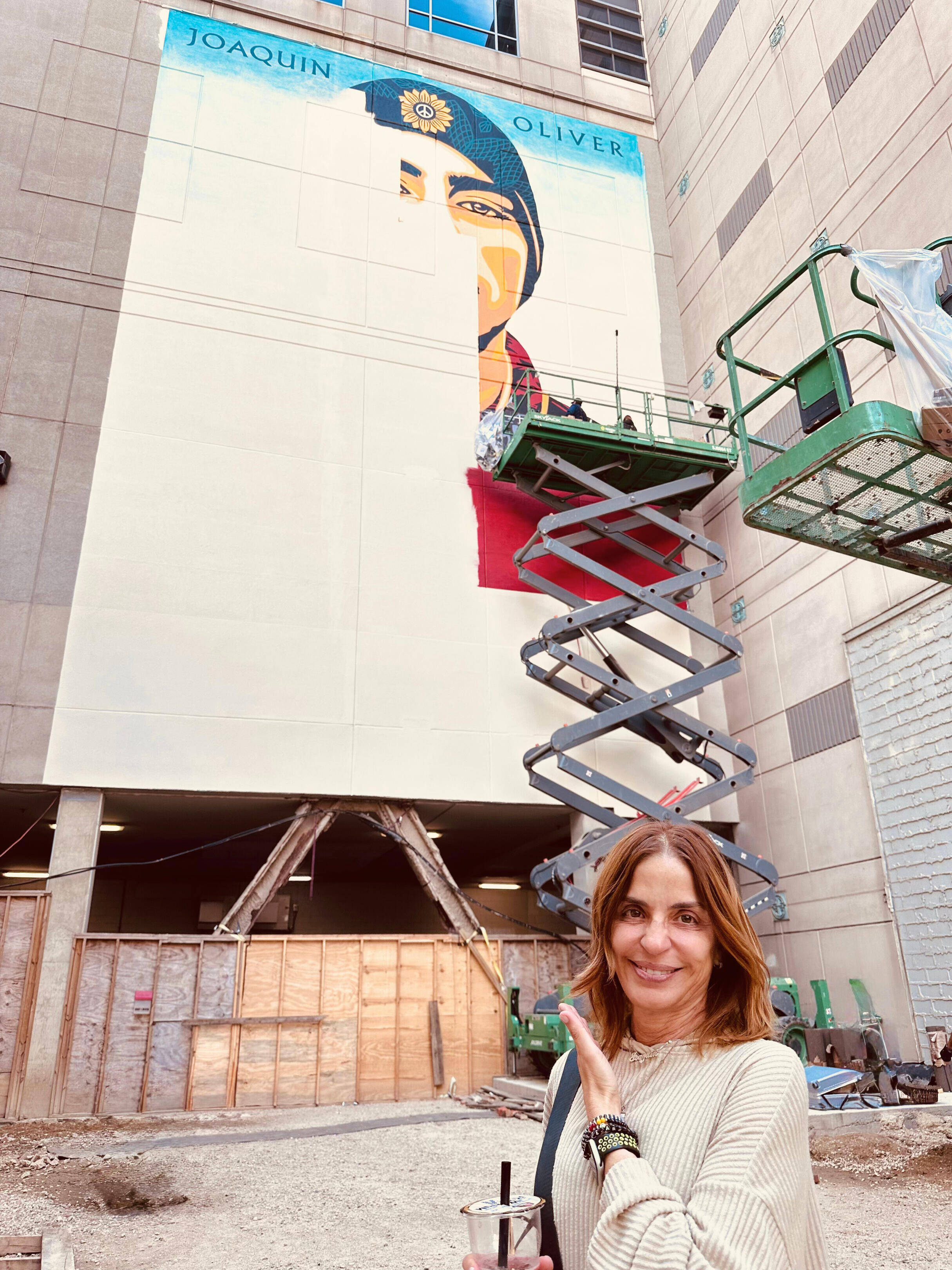
Gun violence is a frightening reality in the United States. Behind every statistic is a family, and a community, forever changed.
Manuel and Patricia Oliver know this reality all too well. Their son, Joaquin “Guac” Oliver, was just 17 years old when he was killed in the 2018 mass shooting at Marjory Stoneman Douglas High School in Parkland, Florida.
Since that unimaginable day, the Olivers have transformed their grief into action. They founded Change the Ref, an organization that uses art and activism to amplify Joaquin’s story and push for gun reform. Their mission: to demand change so other families don’t have to endure the same loss.
Earlier this year, Change the Ref partnered with the DowntownDC Business Improvement District to bring Joaquin’s story to the nation’s capital. The six-story mural, near the Capital One Arena, is impossible to miss. It’s bold, layered, and commands attention from everyone who passes by. It’s also strategically close to the U.S. Capitol, where critical policy decisions are made every year.